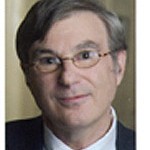The Gods are Broken! The Hidden Legacy of Abraham by Rabbi Jeffrey K. Salkin, U. of Nebraska Press, Lincoln, NE as a Jewish Publication Society Book’; ISBN 978-0-8276-0931-0 ©2013, $19.95, p. 133, plus notes and bibliography
By Fred Reiss, Ed.D.

WINCHESTER, California — The life of Abraham, the first patriarch of the Hebrew nation, is expounded in sixteen chapters of the Book of Genesis, far fewer than the thirty-one chapters set aside to tell the story of Joseph. Yet, the lessons learned from Abraham’s pastoral and nomadic life far outweigh the deeds of the most powerful Jewish man in all of Egyptian history. (Even in Christianity, only Moses’ name is mentioned more times than Abraham’s in the New Testament.) Jeffery Salkin, former pulpit rabbi, prolific author, and now the ADL’s New Jersey Regional Director, examines the ramifications of Abraham’s life in his newest book, The Gods are Broken!
Ask anyone with even a minimal Jewish education to tell a story from the Book of Genesis. Salkin believes that more than likely, you will hear the story of Abraham and how he smashed the idols in his father’s store, which is not a biblical tale at all, but rather a rabbinic legend. It’s a story to which children can relate: the rebelliousness of a teenage boy. What is generally not taught in Jewish religious schools is the rest of the story.
Teraḥ, Abraham’s father, brings Abraham before King Nimrod to determine a punishment for destroying his idols and turning people away from believing in them as gods. Not only has Abraham rebelled against his father, he has also rebelled against the gods, and thus Nimrod himself. In the dialogue between Abraham and the king, Abraham insists that the idols are not gods; God is invisible and cannot be represented in any form. Nimrod throws Abraham into a fiery furnace telling him to pray to his God for mercy. While Abraham is in the furnace, Nimrod turns to Haran, Abraham’s brother, and asks if he too believes in an invisible god. Haran waits until he sees Abraham coming out of the furnace unharmed, (he wants to be on the right side, so to speak) and then he tells Nimrod that he also believes in Abraham’s god. Nimrod throws Haran into the furnace, but he lacks true faith, so God does not save him.
These two stories emanating from a single act form the foundation of Salkin’s search for Abraham’s hidden legacy—the timeless traits of the Jewish nation. Some of these include being a wanderer, a secular iconoclast, and a religious rebel. By casting a wide net over Jewish history, Salkin arrives at arguably his most important point, that the splintering of idols into demolished pieces of wood and stone are a reoccurring theme within Judaism: the smashed of the idols of Abraham, the broken tablets of Moses, the razed Temples in Jerusalem, the fractured and slivered glass of Kristallnacht, and the crushed glass of the wedding ceremony. In The Gods are Broken! Salkin shatters Abraham’s biblical image and then lovingly reassembles him in a ways that offer interesting and unique insights.
*
Dr. Fred Reiss is a retired public and Hebrew school teacher and administrator. He is the author of The Standard Guide to the Jewish and Civil Calendars; Ancient Secrets of Creation: Sepher Yetzira, the Book that Started Kabbalah, Revealed; and a fiction book, Reclaiming the Messiah. The author can be reached via fred.reiss@sdjewishworld.com.